AbdelRahim A. Elmadany
Pearl: A Multimodal Culturally-Aware Arabic Instruction Dataset
May 28, 2025Abstract:Mainstream large vision-language models (LVLMs) inherently encode cultural biases, highlighting the need for diverse multimodal datasets. To address this gap, we introduce Pearl, a large-scale Arabic multimodal dataset and benchmark explicitly designed for cultural understanding. Constructed through advanced agentic workflows and extensive human-in-the-loop annotations by 45 annotators from across the Arab world, Pearl comprises over K multimodal examples spanning ten culturally significant domains covering all Arab countries. We further provide two robust evaluation benchmarks Pearl and Pearl-Lite along with a specialized subset Pearl-X explicitly developed to assess nuanced cultural variations. Comprehensive evaluations on state-of-the-art open and proprietary LVLMs demonstrate that reasoning-centric instruction alignment substantially improves models' cultural grounding compared to conventional scaling methods. Pearl establishes a foundational resource for advancing culturally-informed multimodal modeling research. All datasets and benchmarks are publicly available.
Arabic Inquiry-Answer Dialogue Acts Annotation Schema
May 15, 2015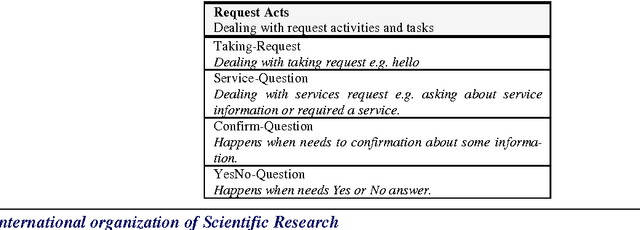

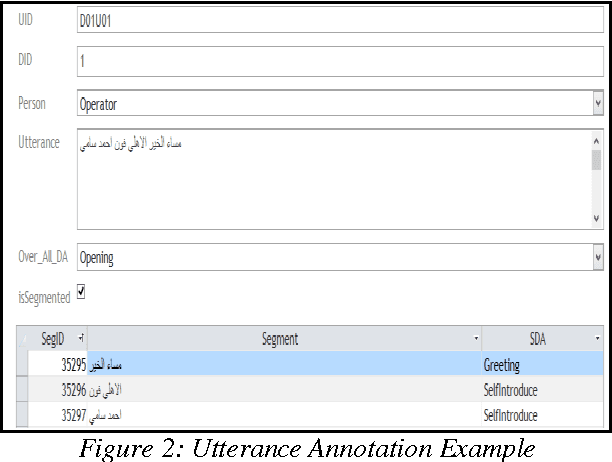
Abstract:We present an annotation schema as part of an effort to create a manually annotated corpus for Arabic dialogue language understanding including spoken dialogue and written "chat" dialogue for inquiry-answer domain. The proposed schema handles mainly the request and response acts that occurs frequently in inquiry-answer debate conversations expressing request services, suggests, and offers. We applied the proposed schema on 83 Arabic inquiry-answer dialogues.
A Survey of Arabic Dialogues Understanding for Spontaneous Dialogues and Instant Message
May 12, 2015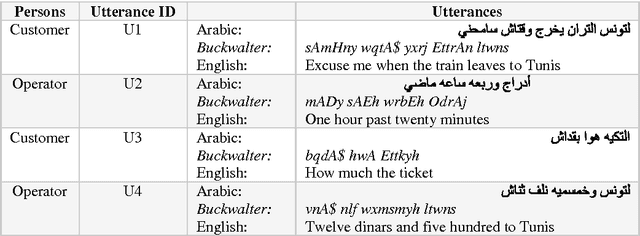
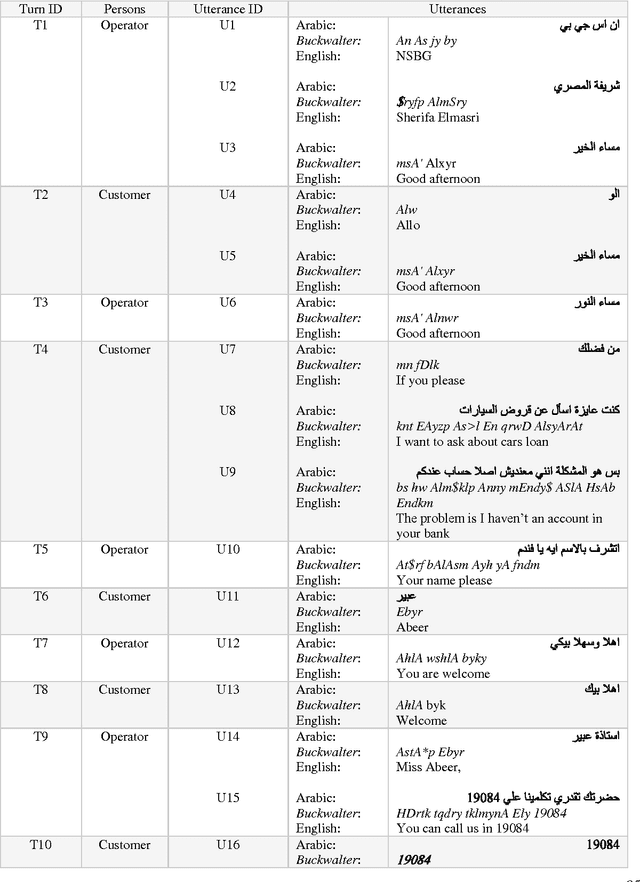
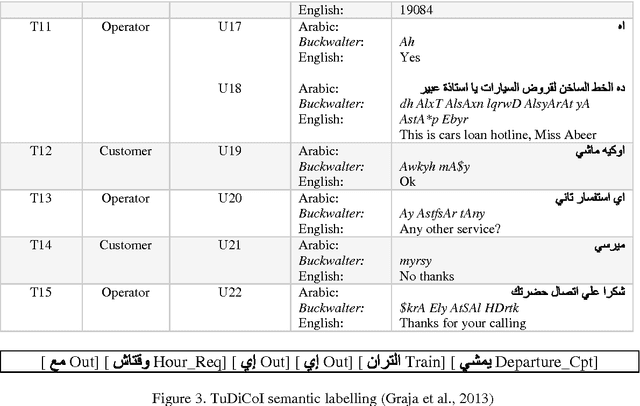
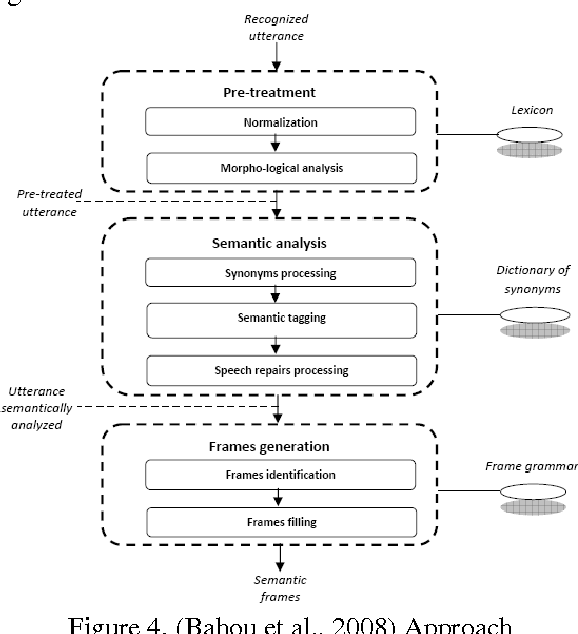
Abstract:Building dialogues systems interaction has recently gained considerable attention, but most of the resources and systems built so far are tailored to English and other Indo-European languages. The need for designing systems for other languages is increasing such as Arabic language. For this reasons, there are more interest for Arabic dialogue acts classification task because it a key player in Arabic language understanding to building this systems. This paper surveys different techniques for dialogue acts classification for Arabic. We describe the main existing techniques for utterances segmentations and classification, annotation schemas, and test corpora for Arabic dialogues understanding that have introduced in the literature
Turn Segmentation into Utterances for Arabic Spontaneous Dialogues and Instance Messages
May 12, 2015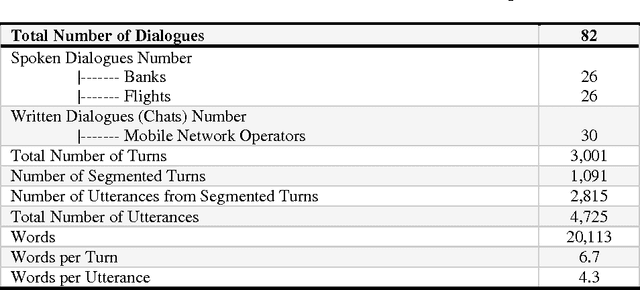
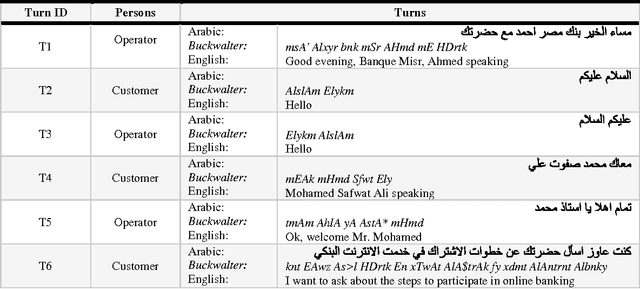
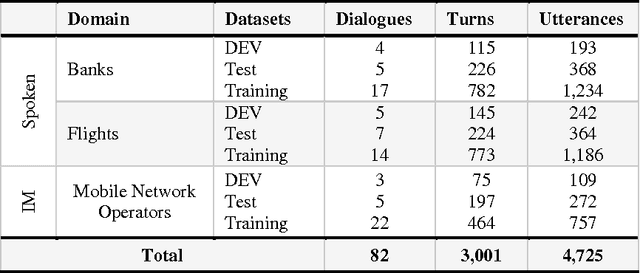

Abstract:Text segmentation task is an essential processing task for many of Natural Language Processing (NLP) such as text summarization, text translation, dialogue language understanding, among others. Turns segmentation considered the key player in dialogue understanding task for building automatic Human-Computer systems. In this paper, we introduce a novel approach to turn segmentation into utterances for Egyptian spontaneous dialogues and Instance Messages (IM) using Machine Learning (ML) approach as a part of automatic understanding Egyptian spontaneous dialogues and IM task. Due to the lack of Egyptian dialect dialogue corpus the system evaluated by our corpus includes 3001 turns, which are collected, segmented, and annotated manually from Egyptian call-centers. The system achieves F1 scores of 90.74% and accuracy of 95.98%.
 Add to Chrome
Add to Chrome Add to Firefox
Add to Firefox Add to Edge
Add to Edge